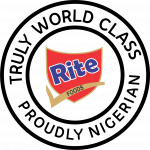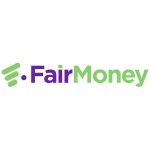Economy
Nigeria Sets to Exit Recession in Q2
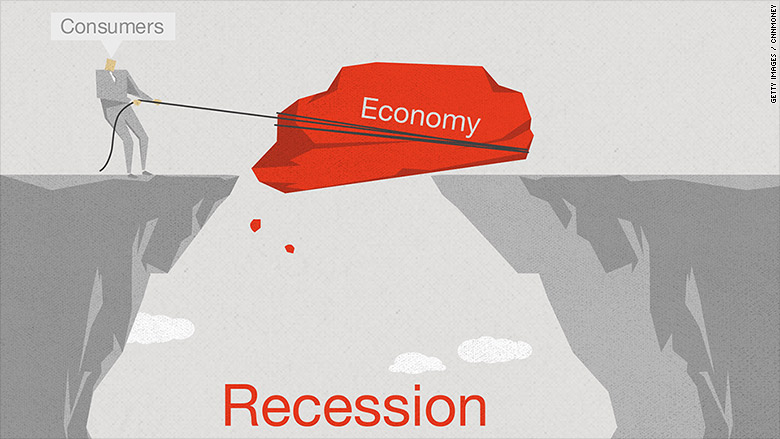
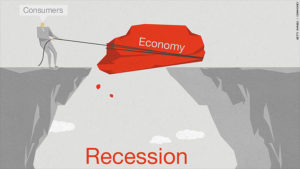
By Cordros Research
Last week, the National Bureau of Statistics (NBS) released Nigeria’s Gross Domestic Product (GDP) report for the first three months of 2017. The report showed that during the reference period, the economy contracted by 0.52 percent y/y (in real terms), 77 bps lower than Bloomberg’s compiled median estimate of 0.25 percent.
Having declined throughout 2016, the contraction in the first quarter of 2017 extends the country’s recessionary trend, and marks the fifth successive quarter of negative output growth rate.
Compared to the rate recorded in Q4-2016 (revised to -1.73 percent from -1.30 percent), Q1-2017 GDP growth rate is ahead by 121 bps, and also higher by 15 bps relative to the corresponding quarter of 2016 (revised to -0.67% from -0.36 percent). On a quarter-on-quarter basis, real GDP growth was -12.92 percent.
The slowdown in the rate of output contraction during the review period is attributable to the rebound in the non-oil sector–supported by sustained growth in Agriculture (3.39 percent y/y), modest rebound in Manufacturing (1.4 percent y/y), and tempered contraction in Services (-0.3 percent y/y vs. 1.6 percent y/y and 1.1 percent y/y respectively in Q4 and Q3-2016).
Suffice to say that the economy would have performed better, save for the significant drag from the oil sector (-11.64 percent y/y) which has remained in the negative growth region for six straight quarters.
The Oil Sector – Still Pressured
The oil sector extended contraction to the sixth consecutive quarter, recording a negative growth of 11.64 percent (vs. -17.70 percent in Q4-2016 and -4.81 percent in Q1-2016). Output from the sector continued to reflect constrained crude oil production, a fallout of the effects of series of militants’ attacks on crude oil and gas installations for the most of 2016.
For insight, the Forcados terminal (c.0.3mbpd) remained under force majeure during the three months period, while production from Bonga (c.0.2mbpd) was suspended in March due to the Turnaround Maintenance (TAM) carried out at the oil field by Shell Nigeria Exploration and Production Company (SNEPCo).
Specifically, the Statistics office estimated crude oil production during the review period to be 1.83mbpd. While this was an improvement over the 1.76mbpd achieved in the final quarter of 2016, it came in well-below both the 2.05mbpd recorded in the corresponding quarter of 2016 and the 2.2mbpd contained in the 2017 appropriation bill.
In contrast to the disappointing pattern in Q4-2016, the increased daily average oil production in Q1-2017 resulted in a growth of 14.86 percent q/q (compared to -9.1 percent q/q in Q4-2016) in the sector.
Noteworthy, the NBS’ reported domestic crude oil production (March 2017 figure is an estimate and is therefore subject to revisions) for the reference period varied with OPEC’s estimates based on direct communication (1.41mbpd) and secondary sources (1.55mbpd)
The Non-oil Sector Rebounds Modestly
The non-oil sector exited the negative growth region it retreated to in the last three months of 2016, growing by 0.72 percent y/y in Q1-2017 (compared to -0.33 percent y/y in Q4-2016 and -0.18 percent y/y in the corresponding quarter of 2016).
Output growth in this sector was supported by activities in the following subsectors: agriculture (particularly crop production), manufacturing, information and communication, transportation, and other services.
Indeed, this subdued the impact of the negative growth, albeit at a slower pace – recorded in Services (accounting for c.64 percent of the economy). On quarterly basis, the non-oil sector declined 14.92 percent, after growing by 5.27 percent q/q in Q4-2016.
Agriculture Fires On
Real growth in the agriculture sector remained positive, coming in at 3.39 percent y/y, 30 bps ahead of the 3.69 percent recorded in the equivalent quarter of 2016, albeit 65 bps below Q4-2016’s 4.03 percent.
Quarter-on-quarter, the sector contracted 27.38 percent (vs. 7.4 percent q/q in Q4-2016). Growth in the agriculture sector, during the review period, was limited by a 3 percent slowdown (from 4 percent in the final quarter of 2016) in Crop Production – which accounted for c.87 percent of the total output from the sector during the period.
Clearly, the sustained growth in this sector further reflected the knockon effect of renewed government commitment – in its diversification campaign – to the sector, evident in increased funding and support in the form of improved supply of seedlings, insecticides, and fertilizers. Particularly, the FGN halved fertilizer price during the review period.
It bears noting that the Central Bank of Nigeria’s Anchor Borrowers’ Programme (ABP) has significantly improved access to agric credit, coupled with notable gains from the Agricultural Credit Guarantee Scheme Fund (ACGSF).
Still on the impact of government policy, area planted has increased on the back of prevailing import restriction on certain agricultural products, which has heralded massive import substitution (amid currency weakness) and backward integration.
Manufacturing: Base Effect and Forex Liquidity to the Rescue
The manufacturing sector rebounded, exiting a four-quarter negative growth spree by recording real GDP growth of 1.36 percent y/y in the reference period, 836 bps higher than the -7.0 percent posted in Q1-2016, and 390 bps higher than Q4-2016’s -2.54 percent y/y.
Quarter-on-quarter, growth was negative 6.21 percent. The improvement in this sector, apart from (1) the favourable base effect, (2) relative step-up in power generation, and (3) possible gains from improved forex liquidity, following the apex bank’s renewed commitment in the form of frequent interventions, was driven by growth in Food, Beverage & Tobacco (4.07 percent y/y, compared to -2.7 percent y/y in Q4-2016) – the biggest component of the manufacturing sector (c.44 percent) – also reflective of the strong start to the year in the performance of top listed FMCG companies including NB, NESTLE, and DANGSUGAR.
Recording its second consecutive positive growth (after exiting recession in Q4-2016: 1.08 percent y/y) of 1.17 percent y/y, Textile, Apparel & Footwear – accounting for c.23 percent of manufacturing – also lifted the broad manufacturing sector.
Also positive for the sector was a rebound (following negative growth in all quarters of 2016) in Cement – the third largest component (c.9 percent) of manufacturing – at 1.83 percent y/y. The modest growth in Cement speaks to the fact that volume growth in the subsector remained tepid, largely constrained by price increase actions taken by cement producers, which consequently restrained private demand (corroborated by a decline in Real Estate: -3.10 percent y/y) – accounting for the largest proportion of domestic consumption. Suffice to say that growth in the subsector was partly boosted by an extension of the tenure of the 2016 budget’s capital spending projects until 5th May, 2017, allowing for an increased spend during the review period.
Services Coming Out of the Woods, Gradually
The services sector remained pressured, contracting by 0.3 percent y/y (vs. 1.6 percent y/y in Q4-2016), extending the sector’s decline to the fourth successive quarter. The slower pace of contraction was on the back of sector-wide growth as shown in Information and Communication (2.9 percent y/y), Transportation & Storage (10.5 percent y/y), Financial & Insurance (0.7 percent y/y), and Other Services (1.7 percent y/y).
The gain from the aforementioned subsectors (among others) was however subdued by declines in Trade (3.1 percent y/y) and Real Estate (3.1 percent y/y) – both collectively accounting for c.42 percent and c.27 percent respectively of the Services sector and overall economy. The negative growth in Real Estate is consistent with lingering low demand for properties, especially for non-residential and prime residential buildings, while Trade suffered amid naira exchange rate depreciation, the FGN’s import substitution policies, and lastly, the highly inflationary environment which weakened consumer purchasing power, and particularly affected trade at both the wholesale and retail segments.
Time to Exit Recession
Thus far in the second quarter of the year, leading indicators suggest positive expectation for output growth. April 2017 PMI figures clearly show expansion in manufacturing (51.1) activities while the non-manufacturing sector (49.5) missed growth by a whisker.
In addition, the latest edition of the Global Economic Conditions Survey revealed a rebound in Nigeria’s business confidence. We anchor growth in Q2-2017 on recovery in the oil sector (on less disruptive output) and stronger growth in the non-oil sector (on continued improvement in the foreign exchange space, commencement of capital releases, and continued growth in agriculture).
Overall, we estimate GDP growth of 1.8 percent y/y in the second quarter of the year.
Over Q2-2017, the oil sector is poised to benefit from improved and stable production. The peace deal between the FGN, and Niger Delta stakeholders and representatives of disaffected youth groups, if not compromised, has the potential of supporting oil production beyond current levels. The Nigerian National Petroleum Corporation (NNPC) stated recently that the restoration of peace to the oil-producing communities has enabled the organization to fast-track the repairs of all pipelines vandalized last year, and thus targets to ramp up output above the budget benchmark of 2.2mbpd by the end of Q2-2017.
For evidence, the Forcados terminal (c.0.3mbpd) has been reported to be operating at near capacity. In addition to the interactive engagement, the FGN’s plan to establish a specialized paramilitary force (comprising coastal patrol teams, Niger Delta subsidiary police, and other paramilitary agencies) in the petroleum industry this year in a bid to ensure zero vandalism of pipelines will be impactful.
Still on government effort at resolving and sustaining peace in the troubled Niger Delta Region, a new state-focused plan, also known as the ring fenced state approach, is being considered by the FGN. Also instructive is the passage of the Petroleum Industry Governance Bill (PIGB), yesterday, which has the potential of attracting fresh investments into the industry.
The non-oil sector should benefit from improved flow of crude oil revenue and continued growth in agriculture on continued focus from both private sector and the government. Stable crude oil production and relatively higher average prices (on OPEC’s commitment to its output cut agreement by way of extending the term of the deal), while bolstering the spending capacity of the fiscal authorities (in implementing the 2017 budget), should provide enough comfort for the monetary authority (to a certain degree) to sustain its frequent forex interventions. We think the CBN’s resolve to increasing the availability of dollars to large scale businesses and retail users, if uncompromised (by policies somersault), and assuming oil prices and production are unimpaired, will lessen the disruptive impact of FX shortage on the economy. In particular, services, trade and manufacturing sectors should benefit from the increased availability of the foreign exchange.
Growth in agriculture will remain strong in the second quarter, and by extension, the remaining part of the year. On crop production specifically, dry season harvest is underway across the country, with generally favorable results being reported in most areas.
Particularly, according to a FEWSNET report, early green harvest of yams and maize are expected to be near-normal. In addition, area cultivated has equally increased, driven by elevated staple food prices (reflected in higher food inflation rate: 19.30% y/y in April) and increased government funding and support.
Also, seasonal forecasts for the rainy season through September/October indicate likelihood for average to above-average cumulative precipitation. These, in addition to anticipated implementation of agriculture-related plans (e.g. recapitalization of the Bank of Agriculture for the provision of low-interest loans to farmers) in the ERGP, and a series of investments (both local and international), suggest increased yield on the horizon.
We look for stronger growth in the manufacturing sector, to be driven by (1) the CBN’s sustained commitment to forex stability, (2) fiscal stimulus from the 2017 appropriation bill which awaits presidential assent, following which the establishment of the FGN Satellite Industrial Centres (SICs) across the six geo-political zones of the country will commence, (3) potential gains from the recently launched Economic Recovery and Growth Plan (ERGP), (4) indications of improved consolidated refinery capacity utilization (25 percent in Q1-2017 vs. 11 percent in the corresponding quarter of 2016), and (5) sustained improvement in power generation, on the back of cessation of hostilities by militants in the Niger Delta, and the rise in water level at the various dams in the country.
Growth should rebound across the services sector, hinged on (1) government effort at improving the ease of doing business in Nigeria, as the Presidential Enabling Business Environment Council (PEBEC) rolled out and set to implement fresh reforms to consolidate and deepen the impact of its previous plan, (2) the recent approval, by the FGN, of the reduction of documentation requirements and timeline for import and export trade transactions to 48 hours, and (3) the CBN’s recent and sustained commitment to forex stability, particularly narrowing the spread between the official and parallel segments of the currency market rates, and creating a special window for SMEs.
Analyst for this report was Peter Moses ([email protected]).
Economy
Customs Street Chalks up 0.12% on Santa Claus Rally

By Dipo Olowookere
The Nigerian Exchange (NGX) Limited witnessed Santa Claus rally on Wednesday after it closed higher by 0.12 per cent.
Strong demand for Nigerian stocks lifted the All-Share Index (ASI) by 185.70 points during the pre-Christmas trading session to 153,539.83 points from 153,354.13 points.
In the same vein, the market capitalisation expanded at midweek by N118 billion to N97.890 trillion from the preceding day’s N97.772 trillion.
Investor sentiment on Customs Street remained bullish after closing with 36 appreciating equities and 22 depreciating equities, indicating a positive market breadth index.
Guinness Nigeria chalked up 9.98 per cent to trade at N318.60, Austin Laz improved by 9.97 per cent to N3.20, International Breweries expanded by 9.85 per cent to N14.50, Transcorp Hotels rose by 9.83 per cent to N170.90, and Aluminium Extrusion grew by 9.73 per cent to N16.35.
On the flip side, Legend Internet lost 9.26 per cent to close at N4.90, AXA Mansard shrank by 7.14 per cent to N13.00, Jaiz Bank declined by 5.45 per cent to N4.51, MTN Nigeria weakened by 5.21 per cent to N504.00, and NEM Insurance crashed by 4.74 per cent to N24.10.
Yesterday, a total of 1.8 billion shares valued at N30.1 billion exchanged hands in 19,372 deals versus the 677.4 billion shares worth N20.8 billion traded in 27,589 deals in the previous session, implying a slump in the number of deals by 29.78 per cent, and a surge in the trading volume and value by 165.72 per cent and 44.71 per cent apiece.
Abbey Mortgage Bank was the most active equity for the day after it sold 1.1 billion units worth N7.1 billion, Sterling Holdings traded 127.1 million units valued at N895.9 million, Custodian Investment exchanged 115.0 million units for N4.5 billion, First Holdco transacted 40.9 million units valued at N2.2 billion, and Access Holdings traded 38.2 million units worth N783.3 million.
Economy
Yuletide: Rite Foods Reiterates Commitment to Quality, Innovation
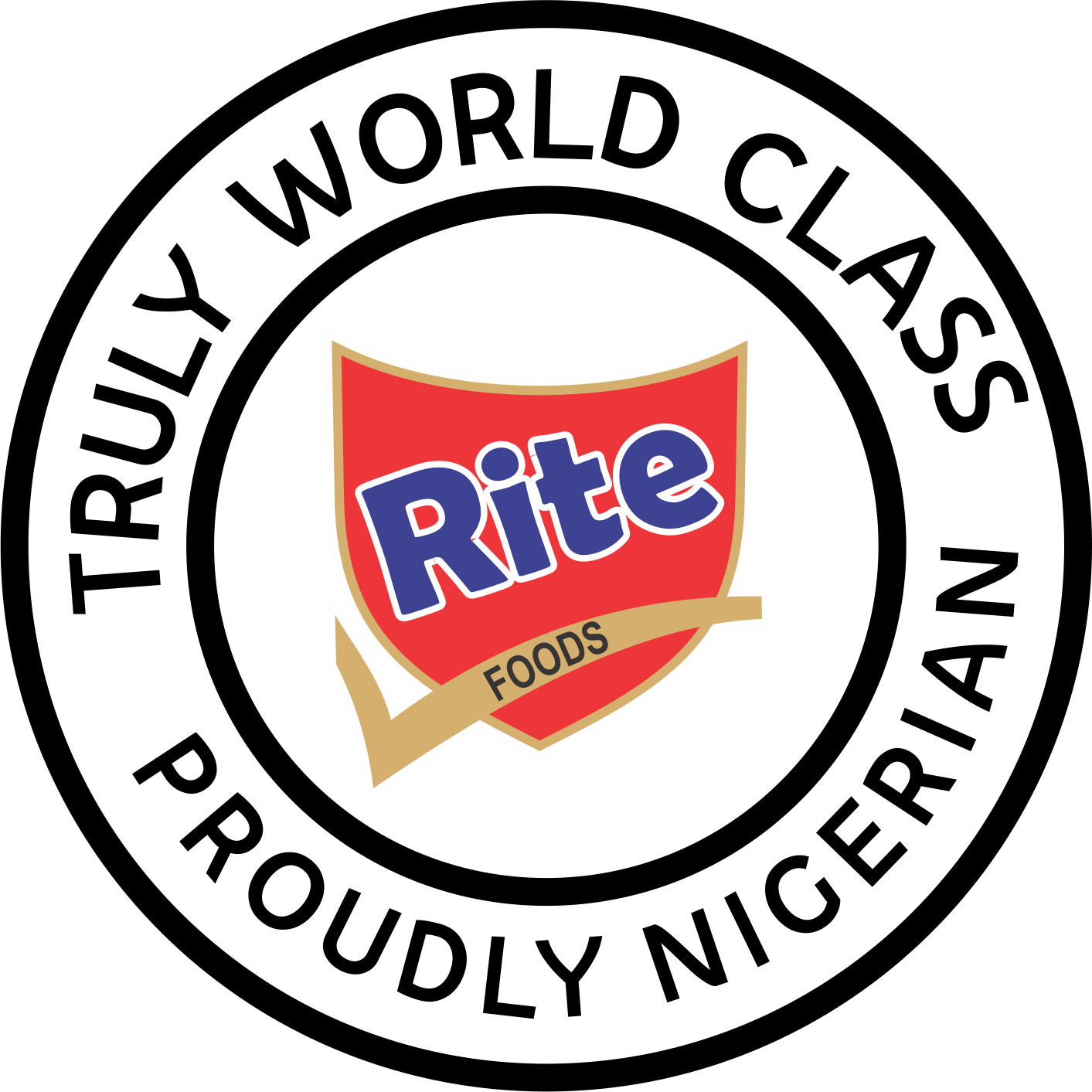
By Adedapo Adesanya
Nigerian food and beverage company, Rite Foods Limited, has extended warm Yuletide greetings to Nigerians as families and communities worldwide come together to celebrate the Christmas season and usher in a new year filled with hope and renewed possibilities.
In a statement, Rite Foods encouraged consumers to savour these special occasions with its wide range of quality brands, including the 13 variants of Bigi Carbonated Soft Drinks, premium Bigi Table Water, Sosa Fruit Drink in its refreshing flavours, the Fearless Energy Drink, and its tasty sausage rolls — all produced in a world-class facility with modern technology and global best practices.
Speaking on the season, the Managing Director of Rite Foods Limited, Mr Seleem Adegunwa, said the company remains deeply committed to enriching the lives of consumers beyond refreshment. According to him, the Yuletide period underscores the values of generosity, unity, and gratitude, which resonate strongly with the company’s philosophy.
“Christmas is a season that reminds us of the importance of giving, togetherness, and gratitude. At Rite Foods, we are thankful for the continued trust of Nigerians in our brands. This season strengthens our resolve to consistently deliver quality products that bring joy to everyday moments while contributing positively to society,” Mr Adegunwa stated.
He noted that the company’s steady progress in brand acceptance, operational excellence, and responsible business practices reflects a culture of continuous improvement, innovation, and responsiveness to consumer needs. These efforts, he said, have further strengthened Rite Foods’ position as a proudly Nigerian brand with growing relevance and impact across the country.
Mr Adegunwa reaffirmed that Rite Foods will continue to invest in research and development, efficient production processes, and initiatives that support communities, while maintaining quality standards across its product portfolio.
“As the year comes to a close, Rite Foods Limited wishes Nigerians a joyful Christmas celebration and a prosperous New Year filled with peace, progress, and shared success.”
Economy
Naira Appreciates to N1,443/$1 at Official FX Market
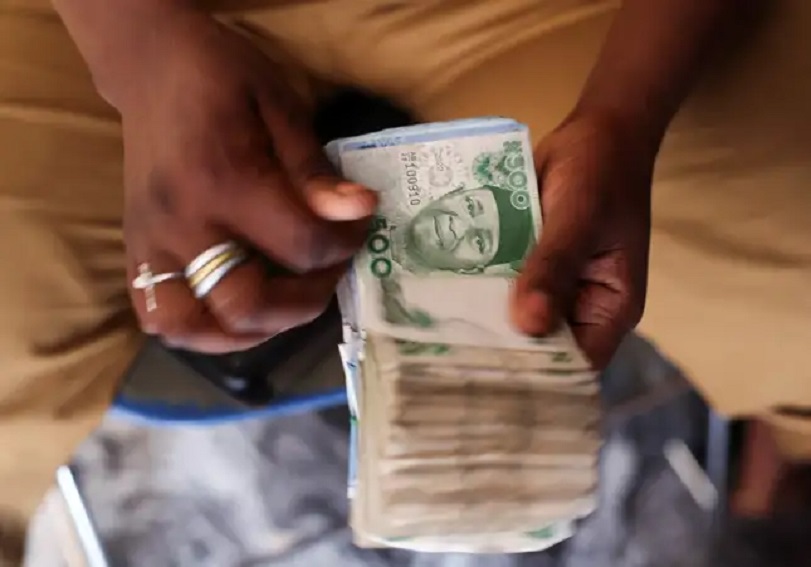
By Adedapo Adesanya
The Naira closed the pre-Christmas trading day positive after it gained N6.61 or 0.46 per cent against the US Dollar in the Nigerian Autonomous Foreign Exchange Market (NAFEM) on Wednesday, December 24, trading at N1,443.38/$1 compared with the previous day’s N1,449.99/$1.
Equally, the Naira appreciated against the Pound Sterling in the same market segment by N1.30 to close at N1,949.57/£1 versus Tuesday’s closing price of N1,956.03/£1 and gained N2.94 on the Euro to finish at N1,701.31/€1 compared with the preceding day’s N1,707.65/€1.
At the parallel market, the local currency maintained stability against the greenback yesterday at N1,485/$1 and also traded flat at the GTBank forex counter at N1,465/$1.
Further support came as the Central Bank of Nigeria (CBN) funded international payments with additional $150 million sales to banks and authorised dealers at the official window.
This helped eased pressure on the local currency, reflecting a steep increase in imports. Market participants saw a sequence of exchange rate swings amidst limited FX inflows.
Last week, the apex bank led the pack in terms of FX supply into the market as total inflows fell by about 50 per cent week on week from $1.46 billion in the previous week.
Foreign portfolio investors’ inflows ranked behind exporters and the CBN supply, but there was support from non-bank corporate Dollar volume.
As for the cryptocurrency market, it witnessed a slight recovery as tokens struggled to attract either risk-on enthusiasm or defensive flows.
The inertia follows a sharp reversal earlier in the quarter. A heavy selloff in October pulled Bitcoin and other coins down from record levels, leaving BTC roughly down by 30 per cent since that period and on track for its weakest quarterly performance since the second quarter of 2022. But on Wednesday, its value went up by 0.9 per cent to $87,727.35.
Further, Ripple (XRP) appreciated by 1.7 per cent to $1.87, Cardano (ADA) expanded by 1.2 per cent to $0.3602, Dogecoin (DOGE) grew by 1.1 per cent to $0.1282, Litecoin (LTC) also increased by 1.1 per cent to $76.57, Solana (SOL) soared by 1.0 per cent to $122.31, Binance Coin (BNB) rose by 0.6 per cent to $842.37, and Ethereum (ETH) added 0.3 per cent to finish at $2,938.83, while the US Dollar Tether (USDT) and the US Dollar Coin (USDC) remained unchanged at $1.00 each.
-

 Feature/OPED6 years ago
Feature/OPED6 years agoDavos was Different this year
-
Travel/Tourism9 years ago
Lagos Seals Western Lodge Hotel In Ikorodu
-

 Showbiz3 years ago
Showbiz3 years agoEstranged Lover Releases Videos of Empress Njamah Bathing
-

 Banking8 years ago
Banking8 years agoSort Codes of GTBank Branches in Nigeria
-

 Economy3 years ago
Economy3 years agoSubsidy Removal: CNG at N130 Per Litre Cheaper Than Petrol—IPMAN
-

 Banking3 years ago
Banking3 years agoFirst Bank Announces Planned Downtime
-

 Banking3 years ago
Banking3 years agoSort Codes of UBA Branches in Nigeria
-

 Sports3 years ago
Sports3 years agoHighest Paid Nigerian Footballer – How Much Do Nigerian Footballers Earn






